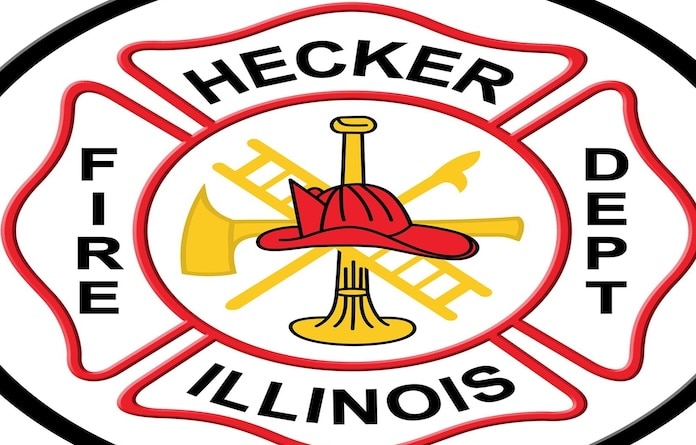Waterloo plans for the future
To help city leaders manage future growth and public services, Waterloo has updated its comprehensive plan for the first time in more than 20 years.
The 2018 Waterloo Comprehensive Plan Update builds upon the city’s 1996 plan, which was reviewed and had its transportation section updated in 2006.
“The 1996 Comprehensive Plan has served Waterloo well, however, rapid urbanization of the city and its surrounding territories, the reconstruction of Route 3, and changes in our national and regional economy all pointed to the need to reconnect with the residents of Waterloo and update the plan,” the plan states at the beginning.
A comprehensive plan serves as a guide to help city leaders direct future land use, zoning, subdivisions and the quality, timing and intensity of future growth. The plan provides the Waterloo City Council, Planning Commission, Zoning Board of Appeals and city staff the focus and direction necessary to make decisions concerning land use, economic development, transportation and public improvements.
Waterloo’s vision, as determined after studying the values and critical issues provided by the community, is: “To preserve Waterloo’s small-town atmosphere, family friendly values and safe neighborhoods while promoting downtown revitalization and well-planned development along Route 3 specifically suited to the needs of Waterloo residents.”
Key information listed in the 107-page document deals with projected population growth figures and findings gathered from a citizen survey as well as from census figures, housing statistics, a planning workshop and other research.
Two growth scenarios were used to identify future population projections for Waterloo out to 2030. Scenarios predicted Waterloo’s population in 2020 to be anywhere from 11,111 to 11,773, with a projected population ranging from 12,583 to 14,127 residents in 2030.
“All projections were made assuming no annexations,” the plan states. “In the absence of future annexations, the city’s only viable option to grow is to increase family and household sizes and via new residential construction.”
Further breaking down the population, the percentage of Waterloo residents over the age of 65 has declined from 16.4 percent in 2010 to 13.9 percent in 2014, according to statistics.
According to the 2010 Census, the median age of Waterloo’s population was 39.8, which is older than the 2000 estimated median age of 36.
Waterloo’s average household size decreased slightly from 2000 to 2014, as did the average family size, the plan states. The average home value in Waterloo in 2014 was $188,650. The median household income in Waterloo in 2014 was $70,976.
Community survey respondents ranked “crime” as a top concern facing Waterloo, with “losing Waterloo’s small-town character” and “road conditions” tied as the second highest concern. “Neighborhood stability” was another concern.
When asked to identify and rank Waterloo’s top community assets, survey respondents ranked “schools,” “quality of life” and “family-friendly atmosphere” as the city’s top strengths. Municipal services were also ranked as one of the top community assets.
There was concern expressed in survey responses that property values will decline in the absence of good code enforcement and property owners, especially landlords, being good stewards of their property.
“According to community advocates, the city needs to continue investing time and resources into property maintenance and code enforcement and planning and zoning to protect the stability of the city’s neighborhoods,” the plan states.
A concern that taxes are “too high and on the rise” was also listed.
The community is split on annexation, according to the plan.
“Some believe it is needed to effectively expand and diversify the city’s tax base while others see annexation as a detriment to Waterloo’s small-town atmosphere,” the plan states.
Almost 60 percent of survey respondents would like Waterloo to “have more trails and walking/biking areas,” the plan states.
Public engagement participants and survey respondents were asked if Waterloo “should invest money in incentives to attract new businesses” and over 60 percent replied in the affirmative. The community was also asked “if there are sufficient employment opportunities in town” and over 56 percent replied “No.”
Almost 70 percent of respondents said the city should not increase taxes to fund public improvements like roads, parks, sidewalks and trails. Respondents also believe development will come on Route 3 and bring tax revenues.
Participants in the public engagement program also expressed concern regarding barriers to economic development.
“In summary, participants of the public engagement program want Waterloo to focus on economic development to attract restaurants, businesses, and retailers that offer more selection, choice, and entertainment,” the plan states. “However, this cannot be accomplished without coming up with a solution to providing access to property along Route 3. Additional business expansion and recruitment is needed to generate revenue to help pay for roads, utilities and other public improvements. In order to attract these businesses, Waterloo needs to grow its population by encouraging the construction of new homes.”
Participants of planning workshop were complementary of the recent improvements and new business openings in downtown Waterloo. However, they believe portions of downtown are not being utilized to their fullest potential and there are too many vacant storefronts and abandoned second-floor apartments.
“Therefore, this plan recommends supporting the momentum generated by local businesses, residents and the city by promoting new economic growth and vitality in downtown and working toward the following goals and objectives,” the plan states.
One of the “quality of life” goals listed in the plan is to encourage the recruitment of an outside entity with a proven track record developing and managing recreational centers to development a community center in Waterloo.
“The community center should include activities for a senior center, a pool/water park, indoor and outdoor play areas, gym, classrooms, meeting rooms, concessions and places for people to gather,” the plan states.
One of the transportation goals listed in the plan is to construct a frontage road along Route 3 to provide access to undeveloped properties as well as provide an alternative route to Route 3.
“This new route should be located and designed to relieve congestion at the busiest intersections along Route 3,” the plan states. “In the event Route 3 is ever blocked for whatever reason, this alternative north/south route will be invaluable to emergency vehicles and necessary to resume normal traffic flow quickly after accidents or other blockages.”
To view the full plan, visit www.waterloo.il.us and click on “2018 Comprehensive Plan” under the “Recent News” tab on the main page.






